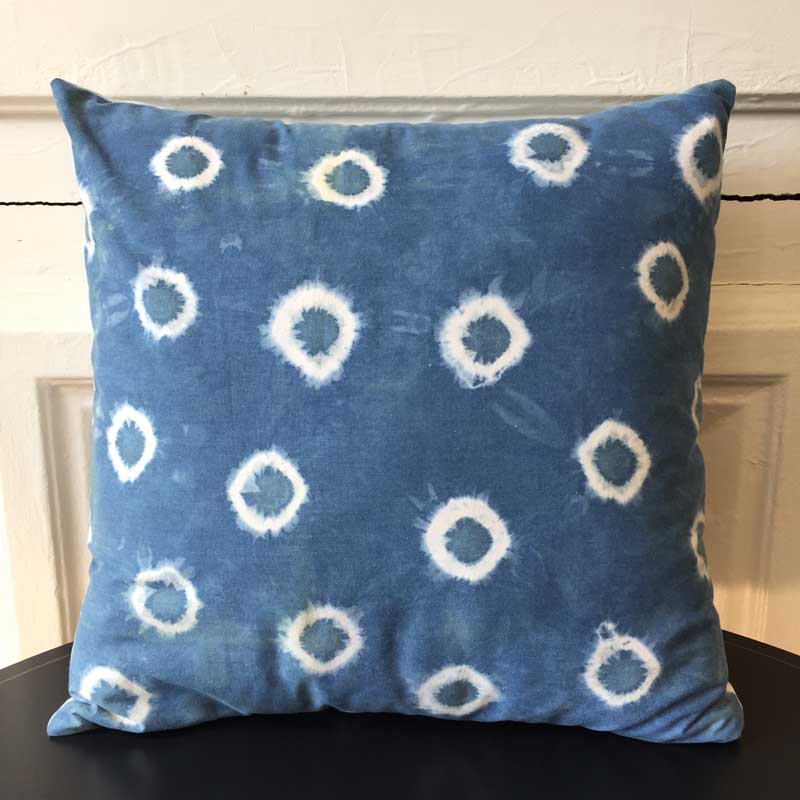If you want to dye with indigo, you have a few options for creating a vat that will produce the desired color. One method that has gained popularity in recent years is the fructose indigo vat, which uses fructose sugar as a reducing agent to remove oxygen from the dye bath.

In this blog post, we'll show you how to create a fructose indigo vat using a recipe that combines elements from Michel Garcia's 1-2-3 indigo vat and J.N. Liles' indigo dye recipe. With this technique, you can achieve beautiful shades of blue on cotton fabrics and yarns, perfect for use in all sorts of projects.
To start, gather your materials. You'll need:
- Indigo powder (we recommend natural indigo, rather than synthetic)
- Fructose sugar
- Calcium hydroxide (also known as slaked lime or pickling lime)
- Natural cotton fabric or yarn
- A large stainless steel or plastic container (do not use aluminum)
- A stirring stick or spoon
- Rubber gloves and protective eyewear
Step 1: Prepare the Fructose Solution
The fructose solution is crucial to the success of the vat. In a separate container, mix together the following ingredients in the order listed:
- 100 grams of fructose sugar
- 500 mL of warm water (around 120°F)
- 5 grams of calcium hydroxide powder
Use a stir stick to mix the solution well, until the calcium hydroxide is completely dissolved. Set this mixture aside.
Step 2: Mix the Indigo Powder
Mix together the following ingredients in a separate container:
- 7.5 grams of indigo powder
- 45 grams of warm water (around 120°F)
Again, stir well using a stir stick until the indigo powder is completely dissolved. Be careful not to splash or spill the mixture, as indigo is notoriously difficult to remove from surfaces and fabrics.
Step 3: Combine the Solutions
Carefully pour the indigo solution into the fructose solution, stirring gently to combine. The mixture will start to turn greenish-yellow as it oxidizes.
Step 4: Wait For Reduction
Cover the container with a lid and let the mixture sit for at least 30 minutes, and up to several hours, until it has reduced and turned blue-green in color. It should look like a thick, foamy slurry.
Step 5: Check the pH
Use pH strips or a pH meter to check the pH level of the dye bath. It should be around 9-10. If it's too acidic, add a small amount of calcium hydroxide to raise the pH.
Step 6: Dye Your Fabric or Yarn
Now comes the fun part! Wearing gloves and protective eyewear, carefully submerge your fabric or yarn into the dye bath, making sure it is fully covered by the liquid. Stir gently for several minutes, then let the fabric soak for at least 15 minutes (longer for deeper shades).
Step 7: Rinse and Neutralize
Remove the fabric or yarn from the vat and rinse it thoroughly in cold water. Repeat this process several times until the water runs clear.
Once you've rinsed off all the excess dye, you may want to neutralize the fabric or yarn by soaking it in a solution of vinegar and water (1 part vinegar to 3 parts water) for 10-15 minutes. This will help set the color and prevent fading.
That's it! With this simple method, you can achieve stunning shades of blue on cotton fabrics and yarns using a fructose indigo vat. Experiment with different fabrics and dye times to create your own unique colors and patterns. Happy dyeing!